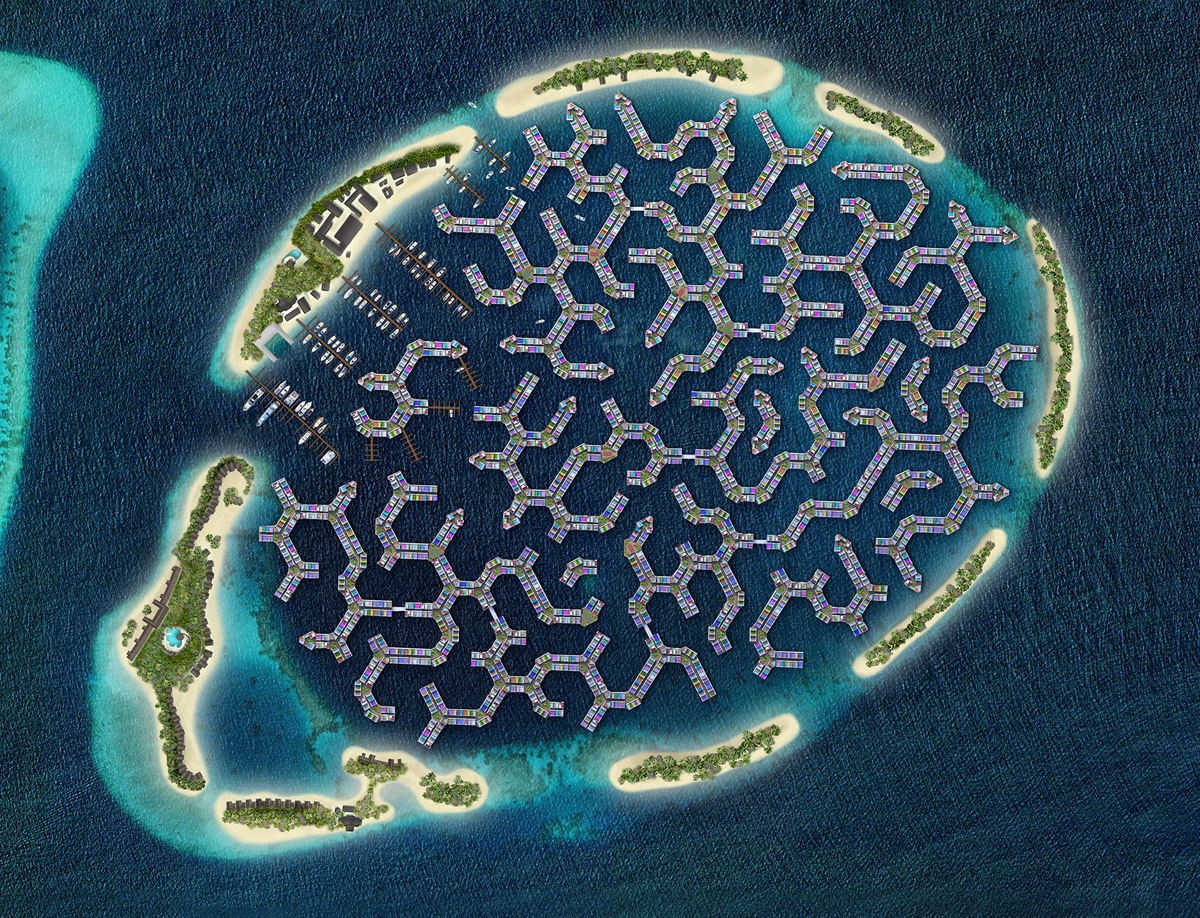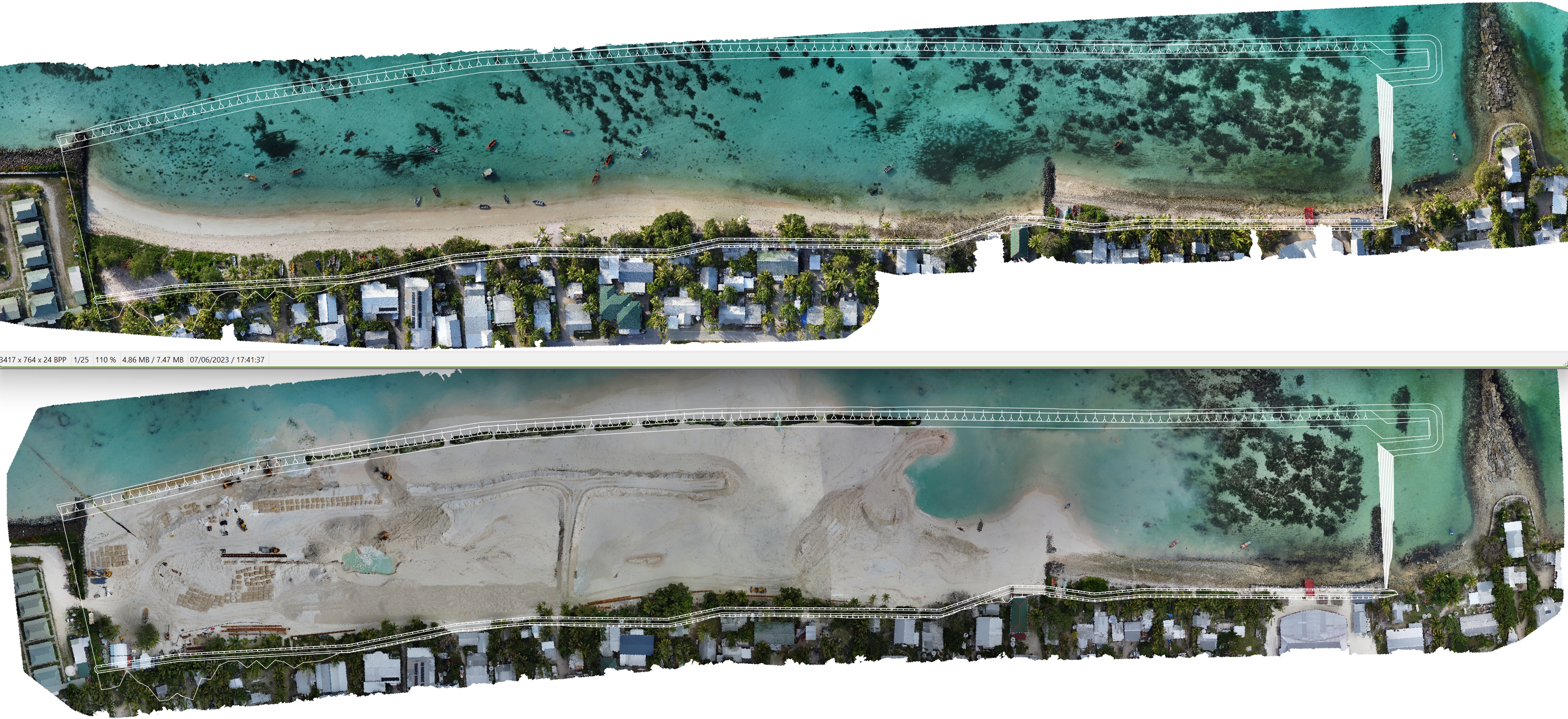45 Solutions for Small Island Countries
rmurphy12
Small Island Countries come with their own unique set of challenges because they are entirely surrounded by water which makes it harder to defend against rising sea levels. Due to their unique set of challenges they also have a unique set of solutions. In this section of the paper I will talk about a few island countries and their solutions to sea level rise: The Maldives and Tuvalu.
The Maldives solutions to sea level rise include: barricades like sea walls, restoring coastal ecosystems, and floating cities. The Maldives have constructed large sea walls on one side of the island of their capital Male in order to stop the seasonal removal of sediment which helps the island retain its shape and size.7 On top of retaining coastline and sediment, seawalls can protect from storm surges and encroaching seas, if built correctly they can be long lasting, cost effective solutions.8 However these seawalls come with an unfortunate side effect, they can harm the health of coral reefs. The coral reefs play a vital role in the Maldives as they practically built the country by contributing to their two main industries, fishing and tourism.9 Coral reefs also serve as natural breakwaters which provide flood reduction benefits through wave breaking. In fact, “The flood reduction benefits of coral reefs and other coastal habitats are predicted to be high and even cost effective in comparison to traditional approaches”.10 In order to retain or restore these reefs the Maldives are using Micro-fragmentation, breaking down healthy coral colonies and then growing them in tanks until they are flourishing, and finally transplanting them to reefs that are damaged or dying.11 Finally, one of the newer technological innovations being used is a floating city. In 2022, the Maldives revealed their plan to make the first floating city on Earth. This city would not only live through rising sea levels but would also support the tourist economy that the Maldives are built around. The floating city will do this by allowing houses to be bought for a starting price of $250,000 and building shopping centers and restaurants.12 The floating city brings up concerns about sustainability and pollution. The plan accounts for this though, the power of the city will use a smart grid where each unit helps produce green and blue energy. Any surplus of energy will be available for any other unit. Shadows could cover the sea floor, which could stop sea life from growing. The floating structures would have enough open space between them to allow for sunlight to come through.12

The next small Island country that is having issues related to sea level rise is Tuvalu. Tuvalu is close to being completely eradicated by sea level rise, so much so that they are possibly going to be the first digital nation by, “archiving its culture, and digitizing its government [so that] Tuvalu can exist as a nation even after its land is no more”. Tuvalu has multiple plans to help with sea level rise including: digitizing their nation, dredging, raising their land beyond sea levels, and seawalls. Tuvalu’s plans of digitizing their nation is a swan song. They plan to recreate their nation one-to-one in an online space in order to preserve their culture and to retain their legacy even after their physical land is gone.13 The next solution that Tuvalu is employing is dredging, dredging is the act of removing sediments and debris from the bottom of the ocean or other bodies of water such as lagoons. Then the sediment and debris is brought to the mainland and used to create large sandbags which are then layered on top of one another to reconstruct and reclaim land. This strategy acts as a buffer to existing land so that the people of Tuvalu can live without the threat of sea level rise destroying their property. When combined with the previously explained strategy of sea walls, this can be an optimal strategy of reclaiming and retaining land.14 Finally, an adaptation strategy that the Tuvalu government and the United Nations are collaborating on is raised land. Ideally, and as I will display later, it is a good strategy to retreat to higher land when sea levels rise but Tuvalu does not have higher land to retreat to. This is why they are, “creating 7.3 hectares of new and raised land which is designed to remain well above sea levels in 2100 and to withstand large storms under higher sea levels”.15 This will be land on the capital and aims to save the communities in these areas from future sea level hazards.

15
The end goal of this project is 3.6 square kilometers of raised land with plans to relocate people and crucial infrastructure such as fresh water supply, food supply, government buildings, schools, and hospitals. There is a possibility for a shipping port and an airport.15
In conclusion, small island countries have a few solutions to fight against sea level rise: dredging, sea walls, and raising land. They also have a few solutions to adapt to sea level rise: floating cities, restoring ecosystems, and digitizing their nation. Some of these methods when used in unison can work to completely eradicate the fear of sea level rise for the next century. Other methods such as the floating cities could work far past the next century and be more sustainable for future generations if done properly.
